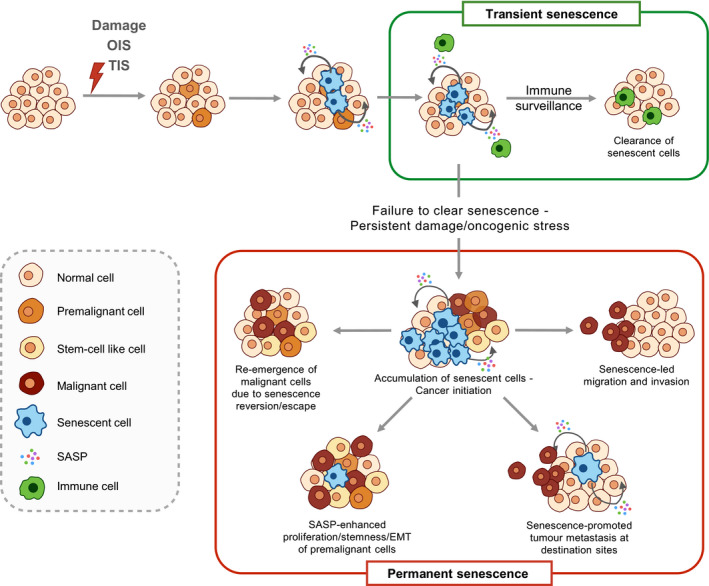Fig. 3.

Dual role of senescence in tumorigenesis. Senescence triggered by OIS or TIS initially halts proliferation of premalignant cells and elicits immunosurveillance of senescent cells via SASP secretion, which in turn mediates clearance of premalignant cells, conferring tumour suppression. In contrast, failure to clear senescent cells leads to chronic inflammation by SASP, which cultivates a pro‐tumorigenic microenvironment that promotes proliferation, EMT and stemness of premalignant/malignant cells. Senescence reversion or escape may result in the re‐emergence of malignant cells that may have higher aggressiveness. SASP also contributes to paracrine senescence and induces chemotaxis of malignant cells, resulting in tumour migration, immune evasion and metastasis in distant organs. EMT, epithelial–mesenchymal transition; OIS, oncogene‐induced senescence; SASP, senescence‐associated secretory phenotype; TIS, therapy‐induced senescence.
